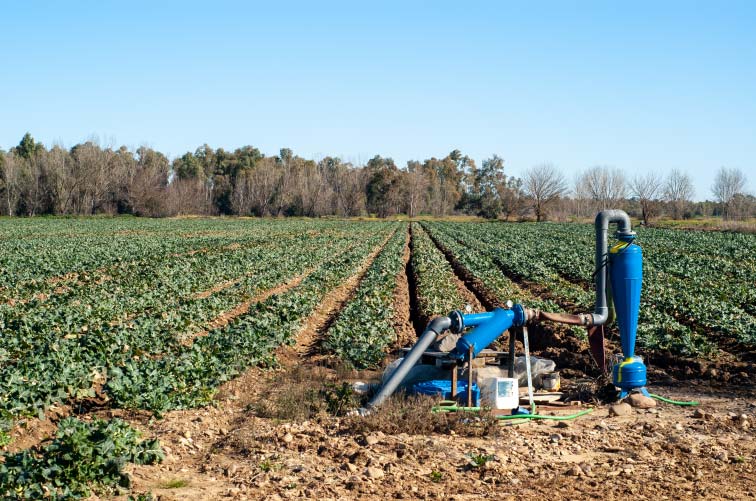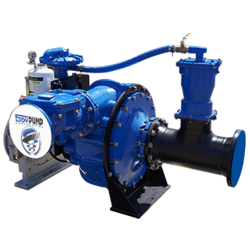Application of EDDY Pump in Agriculture



Application of Our Slurry Pumps in Agriculture

- Manure Management: A slurry transport pump, such as manure, is often used to handle and transport animal waste. These pumps help move the mixture from collection points to storage tanks, treatment facilities, or directly onto fields as fertilizer.
- Biogas Production: A slurry transport pump transfers organic matter and waste materials into anaerobic digesters in agricultural biogas production systems. These digesters break down the organic matter to produce biogas, which can be used for energy generation.
- Irrigation: A high solids pump can transport water mixed with solid sediments for irrigation. They help distribute water and nutrients to fields, ensuring crop growth and soil fertility.
- Dredging and Pond Maintenance: A heavy-duty slurry pump is employed in agricultural settings to remove sediment buildup from ponds, reservoirs, and irrigation channels. This helps maintain water quality and prevents clogging of irrigation systems.
- Land Reclamation: In areas with excessive sediment deposits or land erosion, an industrial slurry pump can pump and deposit sediment in designated areas, aiding in land reclamation and soil improvement.
- Seed Coating: Slurry pumps can be used in seed coating processes, where seeds are coated with protective materials, fertilizers, or pesticides. The pump helps apply the coating mixture evenly onto the seeds.
- Fertilizer Distribution: A slurry transport pump can distribute liquid fertilizers containing suspended nutrients and additives onto fields. This allows for efficient and uniform fertilization.
- Aquaculture: A submersible slurry pump can be used in aquaculture systems to handle water and solid waste from fish tanks or ponds. This helps maintain water quality and prevents the buildup of waste materials.
- Biological Waste Management: Agricultural waste, such as crop residues and organic matter, can be turned into slurry and used as a nutrient-rich solution for fertilization. The slurry transport pump aids in transporting this waste for proper disposal or utilization.
- Silage Handling: Slurry pumps are sometimes used to move silage, fermented feed material used in animal husbandry, from storage to feeding areas.
CALL FOR SALES OR SUPPORT
If you need help with Pump Selection, Sales or Engineering Support
Call 619-345-5446

Application of EDDY Pump’s Hydraulic Dredging in Agriculture

- Irrigation Canal Maintenance: Agricultural fields often use irrigation canals to distribute water. Over time, sediment and debris can accumulate in these canals, reducing water flow and efficiency. Hydraulic dredging equipment can remove residue, ensuring proper water distribution and preventing clogs.
- Water Reservoir Dredging: Dredge pump systems in water reservoirs, ponds, and lakes on agricultural properties help maintain water storage capacity and quality. Accumulated sediment can reduce the reservoir’s volume and promote the growth of unwanted aquatic plants and algae.
- Drainage System Improvement: Proper drainage is essential for agricultural fields to prevent waterlogging and soil erosion. A slurry pump dredge can clear drainage channels and ditches, allowing excess water to flow from fields more efficiently.
- Flood Control: In areas prone to flooding, hydraulic dredging equipment can help increase the capacity of waterways, ensuring that excess water can be safely transported away from fields and livestock areas.
- Erosion Control: A slurry pump dredge can address erosion issues caused by water movement. By removing sediment from eroded areas and redistributing it strategically, erosion can be minimized, and soil health can be preserved.
- Nutrient Management: Dredging can also play a role in nutrient management. Removing nutrient-rich sediment from water bodies can be repurposed as a natural fertilizer for agricultural fields, improving soil fertility.
- Aquatic Habitat Restoration: A Hydraulic dredger can help restore natural habitats within water bodies on agricultural properties. Removing accumulated sediment and debris can improve marine ecosystems and support the growth of native flora and fauna.
- Silting of Reservoirs and Ponds: Over time, agricultural reservoirs and ponds can accumulate silt and sediment, reducing their storage capacity. Pond dredging equipment can remove these materials, ensuring the reservoirs can hold adequate water for irrigation and other needs.
- Water Quality Improvement: Dredge pump systems can help improve water quality by removing pollutants, excess nutrients, and contaminants that may have settled at the bottom of water bodies.
- Aquaculture and Fishery Management: In aquaculture operations, hydraulic dredging can maintain fish ponds and ensure proper water circulation. It can also help manage sediment buildup in fishery areas, improving fish habitat and water quality.




